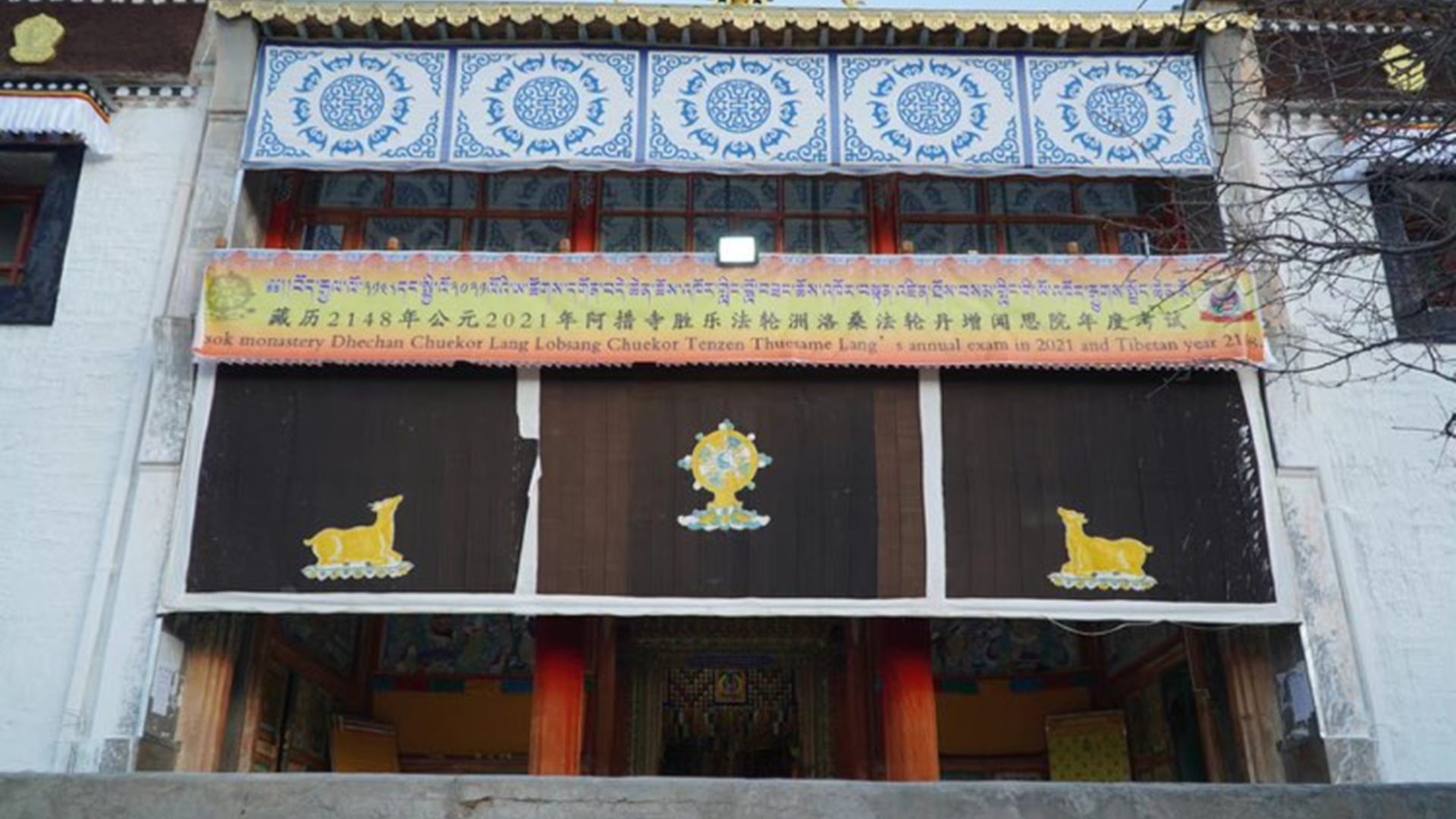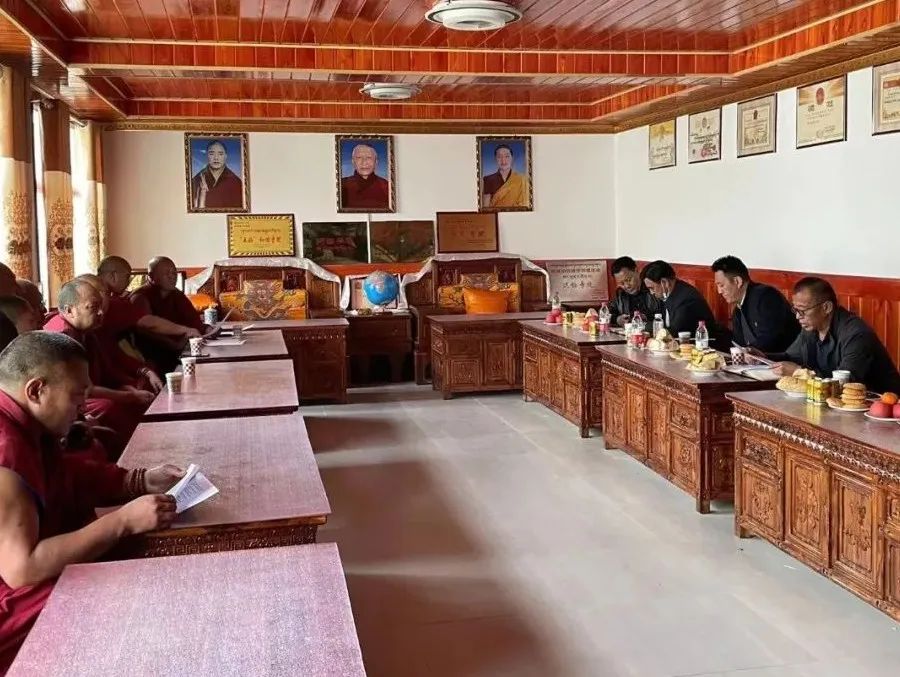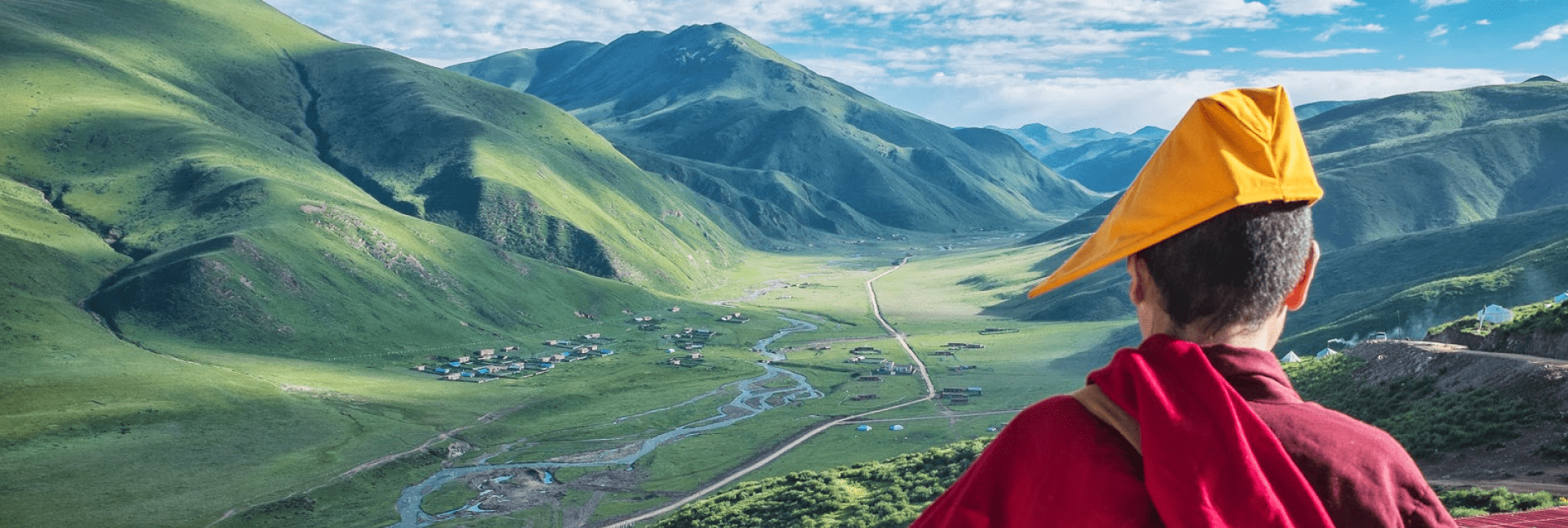
Monastery forced to relocate to make way for hydropower station
Appeals by the monks of Atsok Monastery to halt the relocation have been ignored by authorities
Chinese authorities in Amdo, eastern Tibet are planning to relocate a 19th-century Tibetan monastery against the wishes of its resident monks and local Tibetans. The monastery, located in Drakkar County (Ch: Xinghai) in Amdo, will make way for a hydropower station to be constructed on the nearby River Machu, also known as the Yellow River.
Named after the founder Atsok Choktrul Kunchok Choedar, the monastery is known as Atsok Gon Dechen Choekhor Ling. It was established in 1889 but enrollment of monks below the age of 18 – a tradition widely practised in Tibet prior to its invasion – was put to end in 2021 by the Chinese government. The monastery currently provides accommodation and education in Buddhism for over 157 monks.
The relocation of Atsok Monastery is part of a hydropower construction project that was approved on 29 November 2021 by the National Development and Reform Commission (NDRC), a top Ministerial level department which implements the Communist Party of China Central Committee’s policies and decisions on development and reform. Following the approval, the main responsibility of construction was handed over to Electricity Engineering Construction Company of the Yellow River, or Machu Kungsi, which began site planning from around 26 December 2021.
The first clause of the official approval document Qinghai Yellow River Yangqu Hydropower Station Project Approval: Development and Reform Energy [2021] No. 1739, acknowledged that illegal construction of the station had previously been carried out in June 2010. With the project now being granted permission to continue by NDRC, “ to rationally develop and utilise the hydropower resources in the upper reaches of the Yellow River and avoid the waste of existing projects”, the construction is expected to be completed within two years.
According to the same document, land acquisition of a total land area of 80,691 mu (approximately 53 square kilometres) is planned, spanning across 22 villages in three counties – including Drakkar – and is expected to affect 15,555 people.

Meeting between monks from Atsok Monastery and local officials
A source with knowledge about the relocation process told Tibet Watch that local Tibetans are feeling helpless against the state’s project. Engineers of the project and committee for the relocation of the monastery have been visiting the monastery and telling the monks to cooperate. While the exact date for the relocation has not yet been announced, attempts by Atsok Monastery’s monks to appeal to the authorities for a review of the relocation has not been acknowledged nor addressed. The official plan is to relocate them to a mountain area called Khyokar Naglo, which is three to four kilometres from Palkha Township.
The 17.06 billion yuan project has investments of companies from neighbouring provinces viz. Gansu Electric Power Investment Group Co. Ltd. and Shaanxi Hydropower Development Co. Ltd hold 3.47% and 2.36% of the shares respectively.
Yangqu Hydropower Station is located on the mainstream of the Yellow River at the junction of Drakkar County and Mangra (Ch: Guinan) County in Tsolho (Ch: Hainan) Prefecture, Amdo Province, which is administered as part of Qinghai Province. The cascading dam is to be built with a height of 150 metres, with an average power generation capacity of 4.732 billion kWh.
This would be the second time in recent history of Karmo Yeakhyil valley where large-scale constructions were carried out on the Machu river. Prior to this, from 2014 to 2017, nearly 400 Chinese labourers were employed to build a 2,418 metre-long Gama Yangqu River Highway Bridge to facilitate the construction of Yangqu Hydropower Dam.
Information supplied by Tibet Watch

